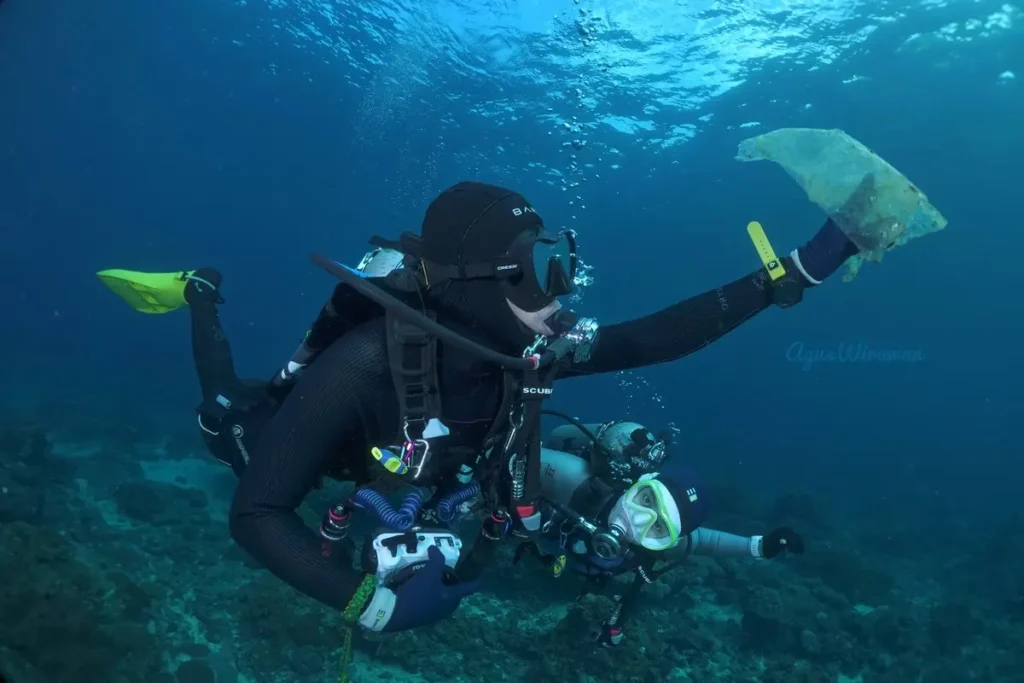
The sea can teach many things without using words. Divers go into the water ready to explore coral reefs, watch colorful fish, and enjoy the calm world beneath the waves. Every dive holds the promise of beauty, but it can also reveal a different side of the ocean. Sometimes, instead of seeing only marine life, a diver spots a piece of rubbish drifting in the current or resting quietly on the seabed. This moment can change the way you look at the underwater world. It is when an underwater clean up becomes more than just a diving activity. It turns into an experience that opens your eyes to both the wonders and the problems of the sea, offering lessons that stay with you long after the dive is over.
Understanding Underwater Clean Up
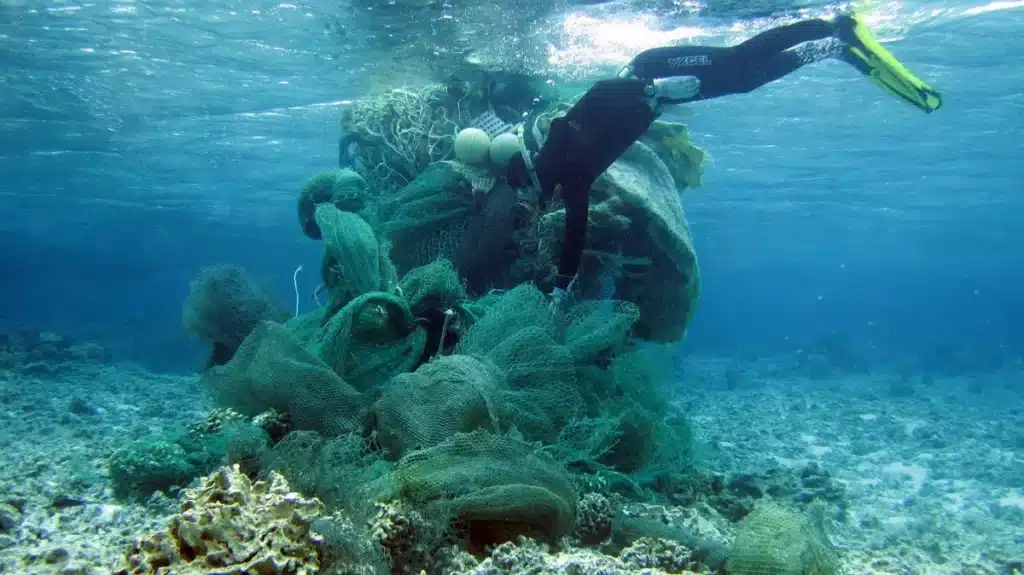
An underwater clean up is a type of conservation activity where divers collect rubbish from the seabed, coral reefs, and other areas below the water’s surface. It is often organized by dive centers, environmental groups, or community volunteers. The goal is not only to remove waste but also to protect marine life and keep habitats healthy.
Common rubbish found during underwater clean ups:
- Plastic bottles and food wrappers
- Old fishing lines and nets
- Glass bottles and cans
- Pieces of clothing or fabric
These efforts help protect marine life and keep the underwater world healthy for the future.
What Does The Undewater Clean Up Do
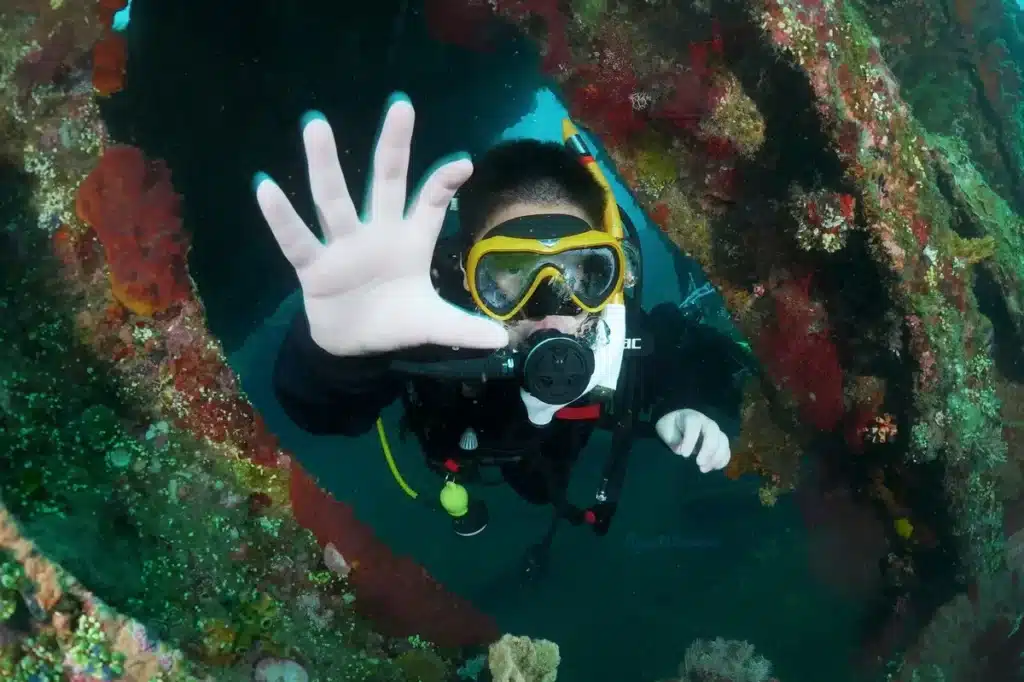
The main goal of an underwater clean up is to remove rubbish that harms marine life and damages habitats. Divers focus on collecting waste that has become part of the underwater environment, such as items stuck in coral or lying deep on the seabed. Once removed, the area can recover more easily, and marine creatures have a safer place to live.
Why the Sea Needs Our Help
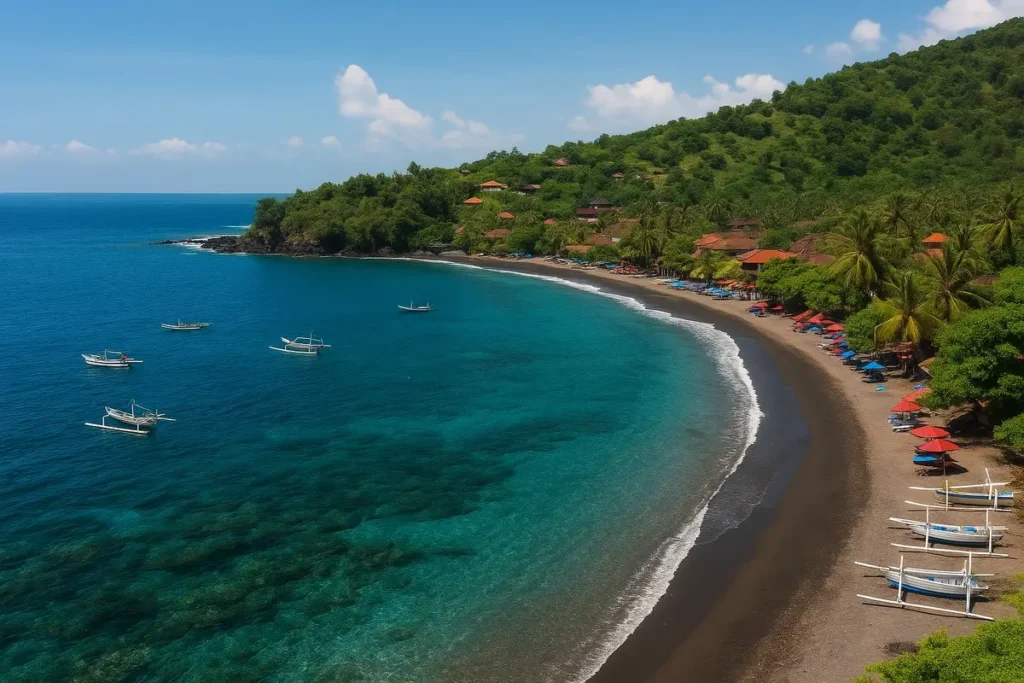
The sea is full of life, but it is also fragile. Many of the problems it faces are caused by humans. Rubbish from land often finds its way into the water through rivers, wind, or storms. Fishing gear left behind can trap animals. Boats and careless divers can break coral. Chemicals and waste from land can pollute the water. These actions slowly weaken the ocean’s ability to support life.
Not all damage is caused by people. Natural events like strong storms, hurricanes, or underwater volcanic activity can also harm coral reefs and change marine habitats. Some animals, like crown-of-thorns starfish, can damage coral when their numbers grow too high. While these events are part of nature, they can be harder for the ocean to recover from when it is already stressed by human activity.
This is why the sea needs our help. By being careful with how it is used, reducing pollution, and taking part in activities like an underwater clean up, marine life can be protected and the ocean can stay safe for future generations.
Discovering the Sea’s Lessons During a Clean Up

An underwater clean up is more than picking up rubbish. It is a moment to slow down and notice how the ocean works. Divers begin to see the links between marine life, habitats, and the things people leave behind. This experience also builds respect for the sea and shows how even small actions can make a big difference.
|
Lesson from the Sea |
What Divers Realize During a Clean Up |
|---|---|
|
Everything is connected |
One piece of waste can damage coral, trap fish, and affect other animals in the food chain |
|
Respect for nature |
Coral is fragile and needs gentle handling to avoid harm |
|
Awareness |
Moving slowly reveals small creatures and hidden parts of the reef that are easy to miss |
|
Small actions matter |
Removing one item can save an animal and encourage others to care for the sea |
Seeing Real Change in the Sea

Some dive spots can change a lot when clean ups are done regularly. Places that once had bottles, fishing lines, and other rubbish scattered across the seabed slowly become cleaner and healthier. Over time, soft corals begin to grow back, and schools of fish return to swim through the area.
Examples of dive spots that improved after regular clean ups:
- Great Barrier Reef, Australia: Volunteer divers worked with conservation groups to remove discarded fishing gear and plastic waste. Over time, damaged coral areas began to recover, and the number of reef fish and sea turtles increased.
- Koh Tao, Thailand: Once struggling with rubbish from tourism and boat traffic, local dive shops started monthly clean ups. Visibility improved, coral growth became healthier, and sightings of whale sharks became more frequent.
- Monterey Bay, USA: Divers collected lost crab pots, fishing lines, and other debris from the kelp forest. This allowed marine mammals like sea otters and seals to swim freely without risk of entanglement.
- Red Sea, Egypt: Regular clean ups around popular dive sites removed plastic bags and bottles trapped in coral. The reefs became safer for fish, and vibrant soft corals began to return to full health.
- Menjangan Island, Bali: Known for its beautiful coral walls, some areas once had rubbish caught in shallow reefs. After regular underwater clean ups by local dive operators and community groups, the site became clearer, coral health improved, and more reef fish and sea turtles were spotted by divers.
- Sipadan Island, Malaysia: After repeated underwater clean ups, the island’s dive sites saw clearer water, healthier reefs, and the return of large schools of jackfish and barracuda.
These examples show that no matter where they are in the world, dive spots can recover when people commit to protecting them through regular underwater clean ups.
Gaining Practical Knowledge for Future Dives
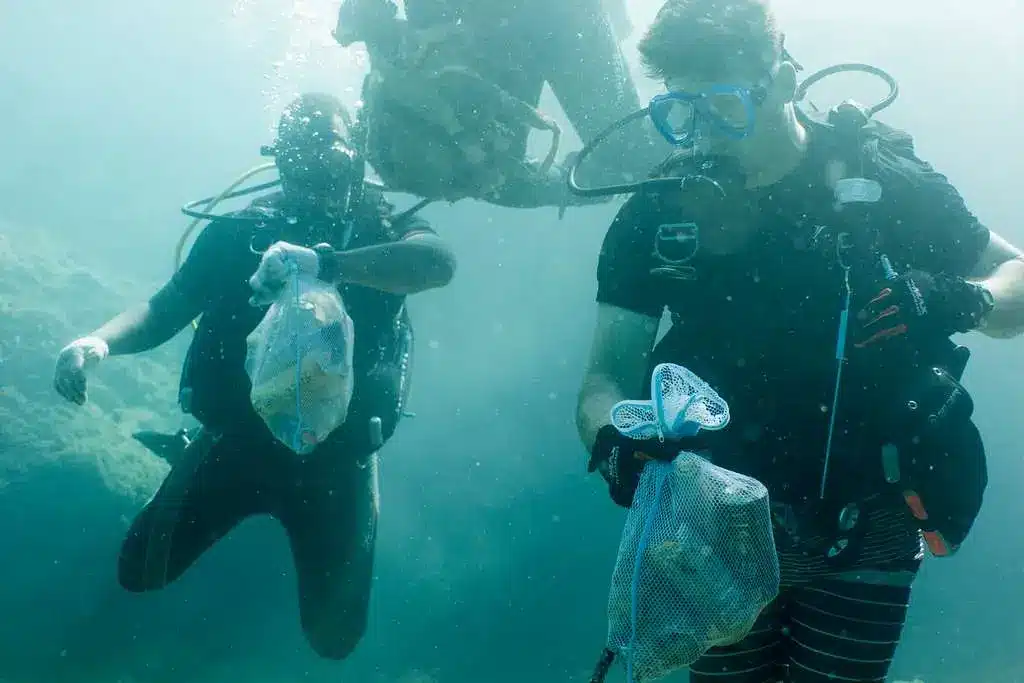
Taking part in an underwater clean up is not only good for the sea, it can also make you a better diver. Collecting rubbish underwater teaches you to move with care, adjust your buoyancy more often, and think ahead before making any movement. Handling objects gently becomes second nature, ensuring coral is not disturbed and marine life is not harmed.
Many divers find they become more confident after clean ups. They gain experience in different conditions, such as low visibility or stronger currents, while focusing on a specific task. It also strengthens teamwork, as divers often work with a buddy to search an area or lift heavier items together. These skills can make every future dive safer, smoother, and more enjoyable.
What to Bring for Underwater Clean Up
Being prepared helps make an underwater clean up safer and more effective. The right gear makes the work easier and protects both the diver and the marine environment.
Useful items for an underwater clean up:
- Gloves: Protect hands from sharp or rough objects.
- Mesh bag: Allows water to flow through while holding collected rubbish.
- Cutting tool or scissors: Helps remove fishing lines or nets without damaging coral.
- Proper dive gear: Well-maintained mask, fins, and wetsuit for comfort and safety.
- Surface marker buoy: Makes the diver more visible to boats when surfacing.
It is also important to bring good buoyancy control skills and a careful attitude. Handling rubbish gently and moving slowly keeps marine life safe and prevents damage to the reef.
Stories from Divers

When divers share their stories about underwater clean ups, it becomes clear how powerful and memorable these dives can be.
Maria, a diver in the Philippines, shared, “I went in expecting to pick up a few plastic bottles, but I ended up finding fishing nets tangled in coral. It made me realize how much damage can happen without anyone noticing. Now I make it a habit to collect any rubbish I see during every dive.”
In Mexico, Carlos described his first clean up near Cozumel: “The reef looked fine from a distance, but when you got close, you could see small pieces of plastic stuck between the coral. Removing them felt like giving the reef a little more room to breathe.”
Sophie, who joined a clean up in Egypt’s Red Sea, said, “It was the most rewarding dive I’ve done. We saw more fish in just a few weeks after removing the rubbish. It was proof that the ocean responds when we care for it.”
These stories show that an underwater clean up is not just an activity — it is an experience that changes how people see the ocean and their role in protecting it.
Protecting the Sea, Protecting Our Future

An underwater clean up is more than just removing rubbish from the sea. It is a way to see the ocean’s beauty and its struggles side by side, to understand how closely our lives are linked to the health of the water, and to realize the difference small, consistent actions can make. Each dive offers a chance to protect marine life, restore habitats, and take home lessons that can guide how we live on land.
Bali Fun Diving is a licensed scuba diving centre in Bali that is passionate about protecting the ocean and caring for marine life. The dive center is dedicated to eco-friendly practices, taking part in underwater clean ups, working with local communities, and promoting methods that keep reefs and dive sites healthy. The team shares knowledge with divers on how to enjoy the underwater world while protecting it, helping ensure that the beauty of Bali’s seas can be experienced for generations to come. By choosing eco-friendly diving and supporting conservation, every diver can help keep Bali’s underwater treasures alive for the future.
Share this Article